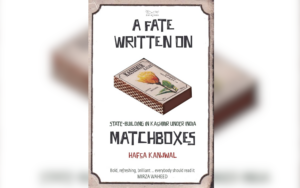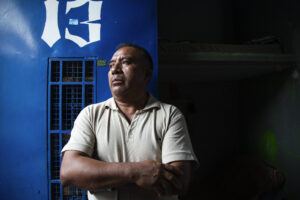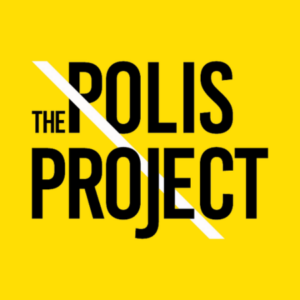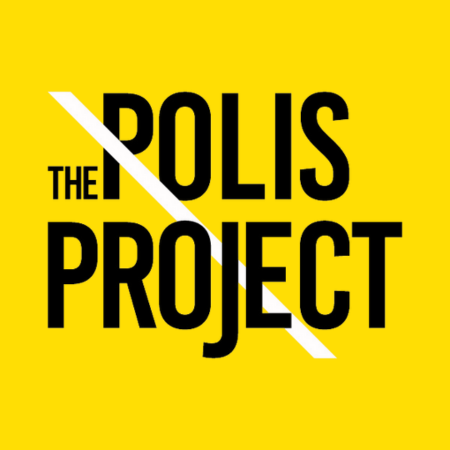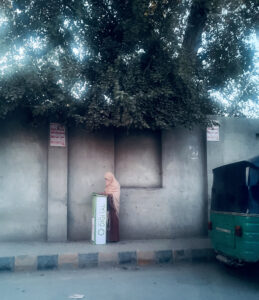
The Pathan Sisters: Resistance and Sisterhood in the Face of Hindutva Violence
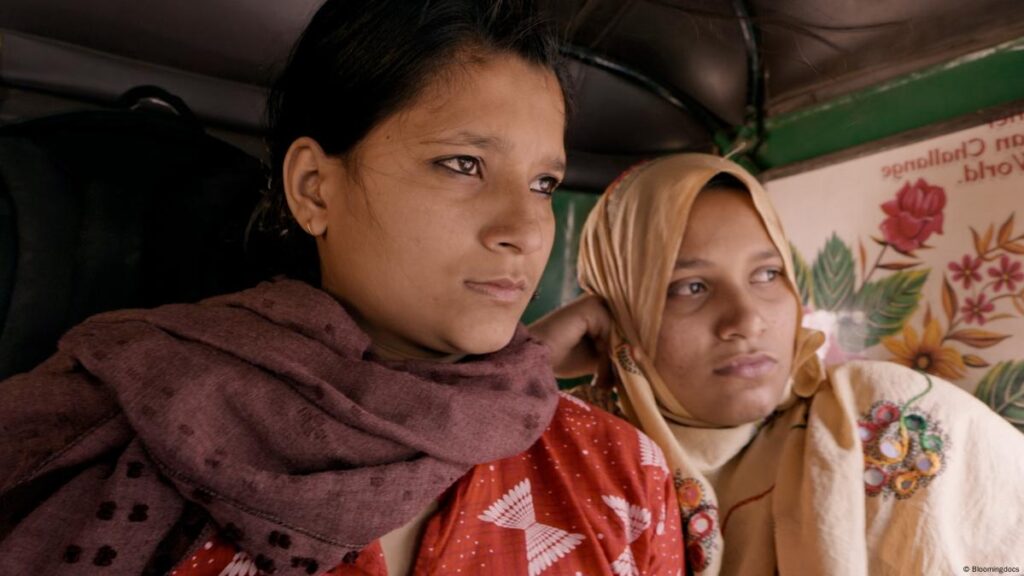
Eléonore Boissinot’s The Pathan Sisters (2023) presents a deeply personal yet politically charged portrait of Muslim womanhood in contemporary India. Having premiered at the 2023 Locarno Film Festival Critics’ Week, the documentary chronicles the lives of Sofia and Suzain, two sisters growing up in Ahmedabad, Gujarat, who survived the 2002 anti-Muslim pogrom that massacred several families residing in Gulbarg Society.
Through their story filmed over six years, Boissinot explores the intersection of gender, class, and religious identity in a landscape of systemic exclusion and state repression, amid the rise of Hindutva nationalism and the Bharatiya Janata Party’s (BJP) dominance in Indian politics over the 21st century.
At first glance, the sisters seem like any other adolescents, their dupattas swaying in the breeze as they share moments of camaraderie on the terrace of their building, or express frustration at their father’s restrictions. But as The Pathan Sisters unfolds, it reveals the burden of trauma that has shaped their lives. Their days are marked by an eerie absence of school, social interactions, or access to the street.
The film subtly pieces together how their isolation and constrained existence stem from deep-seated fear, and the structural violence of segregation of life in Juhapura—the largest Muslim ghetto in India.
Awarded the Premio Zonta Club, The Pathan Sisters goes beyond portraying the sisters as mere victims of historical and ongoing violence. Instead, it captures them as agents of quiet resistance, whose acts of sewing, participation in street protests, and the tenderness and joy of their sisterhood become subversive disruptions to the hyper-masculine State, driven by a narrative of hate and fundamentalism, that has systematically targeted Muslim bodies and spaces.
On Trauma and Survival
Early on, the audience is drawn into Sofia and Suzain’s inner lives. They dance to Bollywood numbers with their friend Rani to their father’s chagrin, whom he calls a “bad influence”, and speak to their boyfriends through a secret phone. Their spirited defiance, rooted in adolescent angst, registers a zest for life and a desire for freedom.
These moments, however, are interspersed with scenes of Suzain’s recurring nightmares of a “witch,” where she is beaten by a woman in a “red and brown” saree, whom she believes wants to suck the life out of her. Though she was a child during the pogrom, these memories linger in her body and psyche, preventing her from fully engaging in the present. The fears grip her so strongly that she can no longer attend school.
The cinematography powerfully conveys this disturbance. The red fan in her room emits a slow, humming noise, punctuating the darkness. The flickering night light casts unsettling shadows as Suzain sits on the kitchen slab, swaying slightly. Her blank stare suggests exhaustion or deep contemplation.
The kitchen—usually a space of labor—becomes her sanctuary, where she narrates her fears. The absence of her mother, who left after the massacre, adds to the film’s lingering sense of loss.
Subversive Stories of Muslim Women
“Kya aurat hain (what a woman),” exclaims Sofia in one of the scenes that set the tone for the second half of The Pathan Sisters, admiring the woman on the family television screen asserting her identity as an Indian Muslim vis-à-vis her constitutional rights: “Why should we leave the country? Isn’t this country ours too?”
The woman on the television is part of a local chapter of what came to be known as the Shaheen Bagh protest. Beginning in December 2019, this intergenerational sit-in signified the most resonant politics of resistance since India’s independence. The protest embodied the nationwide agitation against the brazenly anti-Muslim Citizenship (Amendment) Act (CAA) and the National Register of Citizens (NRC). Muslim women—including the elderly, some in their 70s and 80s—not only participated, but also led the sit-in over several weeks, challenging the long-standing stereotype that Muslim women rarely take to the streets.
As Sofia watches the protest unfold on television with her sister, father, and grandmother in their modest home on the outskirts of Ahmedabad, her quiet admiration suggests a deepening political consciousness—one that ties her personal history to the larger movement of Muslim women asserting their rights nationwide.
While The Pathan Sisters does not portray Sofia as an overt activist, her participation at the protest site, accompanied by Suzain’s sewing teacher, her engagement with fellow demonstrators, and her admiration of the protests strengthen the arc of her political awakening.
Boissinot thus positions Sofia not only as a survivor of State-sponsored anti-Muslim violence but also as a stakeholder in the evolving Muslim feminist resistance movements and spaces of solidarity. She is the radical face of political resistance in the times of Hindutva hate.
In a scene toward the end, Suzain stitches on the family’s sewing machine, a material object that survived the massacre, acting as a reminder of the family’s painful past. The kurta she stitches brings joy to the Pathan family, as it signals a new beginning, one where her resilience wins in creating a piece of clothing, working around her trauma.
Through Suzain, we see how some rebellions are waged in private spaces, where survival becomes an act of defiance. This is especially compelling as Muslim women have been the target of relentless online Islamophobic hate campaigns and social atrocities, including banning the right to education of hijab-wearing girls, in the past years.
On the Indian Independence Day of August 15, 2022, Prime Minister Narendra Modi invoked the pride of woman power or “nari shakti”. But on the same day, 11 people walked out of a Godhra sub-jail and were greeted with garlands by the Vishwa Hindu Parishad (VHP). These men had been sentenced to life imprisonment in 2008 for gang-raping a pregnant Bilkis Bano and several members of her family during the Gujarat genocide of 2002.
Challenging Dominant Narratives of Muslims
The fault lines of a regime that has been unleashing a reign of terror for Indian Muslims loom heavily in the backdrop of The Pathan Sisters, and perhaps on the conscience of the audience. And yet, Boissinot’s tender gaze towards the sisters and the family humanizes them beyond being symbols of survival, without reducing them to their political marginalization.
The film includes several quotidian scenes of the sisters in regular acts like helping their father with hair coloring, listening as he talks about taking Suzain to a healer for her recurring nightmares, or Sofia watching him sew while lying on the bed in the hall, her warm smile reflecting admiration and enthusiasm. These intimate moments offer a counterpoint to the broader political tensions.
In one heartwarming scene, Sofia leans onto the frail frame of her grandmother as they look through family photographs. Sofia looks at the photographs of her aunts and parents fondly, as her grandmother answers her questions about life in Gulbarg before the massacre.
A photograph of Sofia’s parents evokes nostalgia—she wonders about a missing necklace her mother once wore, only for her grandmother to clarify that it was stolen during the attack, a tangible marker of their family’s material, physical, and psychological loss. In another photograph, her mother wears Western clothes, to Sofia’s admiration, standing beside her father as a large tree shades the balcony. The grandmother notes that the tree has survived.
In a humorous moment, Suzain plans her future husband’s workday—he’s a rickshaw driver, for a better income. She loves him, she says, but urges him to “be smart for a change and take my advice.” Suzain carves out agency within her constrained circumstances through small but significant ways.
By immersing us in their everyday lives—their dreams, anxieties, laughter—The Pathan Sisters challenges dominant narratives of Muslim victimhood. It reveals them as active participants in their history, who reclaim their dignity, identity, and space in an increasingly hostile India with enduring strength. The film, in essence, is an act of witnessing, a quiet yet forceful defiance against systemic erasure.
The portrayal of the sisters’ father defies tropes of the conservative Muslim patriarch. At first glance, he appears oppressive, asking his daughters not to venture outside. But as the film progresses, his character unfolds, revealing a protective instinct rooted in unspeakable suffering.
He has witnessed the brutal murder of his father and female relatives in the pogrom, yet he shows rare courage in allowing his daughters’ lives to be filmed. He emerges as a man who has remained steadfast in his faith, his belief in survival unwavering.
One of the film’s most striking moments captures him sitting on the floor for a meal, inviting the director to eat with him. His voice is steady, his demeanor gentle. He recalls, almost in a nondescript manner, the unimaginable brutality—the stripping and killing of women in his family, the suffocating fear of being trapped as Hindu mobs waited outside. His reluctance to discuss the past is not from apathy but from the burden of carrying it.
Ghettos and the Politics of Exclusion
The Pathan family survived the Gulbarg massacre, where mobs “brandishing swords, scythes, sticks and carrying cans of petrol, diesel and kerosene” burned alive 35 Muslims, including former MP Ehsan Jafri; 31 others disappeared, later presumed dead, bringing the death toll at Gulbarg Society to 69.
It was the first time, perhaps, when the Muslim elite was the target of Hindu mobs, as Sharik Laliwala, Christophe Jaffrelot, and Priyal Thakkar explore in a 2021 article. They trace the unique position of Juhapura’s inflated real estate value vis-à-vis an elite demand and spatial constraints arising from the Disturbed Areas Act (1991), which prohibits Hindu-Muslim property transactions in Gujarat’s major cities and towns. Signaling the rise of a police state, the police kept an eye on the “suspicious” community in Juhapura, reinforcing a religious apartheid.
In his 2017 article, Tarique Anwar documents the area’s neglect and lack of infrastructure, a theme eerily mirrored in the sisters’ poignant visit back to Gulbarg Society, where they light incense amid ruins their family once called home.
In a particularly striking sequence, Sofia and Suzain visit the ruins of Gulbarg Society, where they light incense in memory of their grandfather. The camera lingers on charred walls. The sisters call their mother, remarking how her kitchen remains the same. Nostalgia spreads over the scene, but reality interrupts it: they sigh that they can never return here, as the area has become “too (dangerously) Hindu” for them.
A May 2024 BBC video story reports that Juhapura’s residents have been denied roads, streetlights, water, and sewage facilities for the past 20 years, exposing deliberate negligence. Boissinot’s camera work subtly captures this neglect and abandonment. The framing of the sisters within tight shots inside the confines of their home, while panning across a flyover and streetside shops framing Juhapura’s invisibilized world, seems to convey claustrophobia—the margin against the centre.
Spatial segregation is effectively captured in an emotionally luminous scene where Sofia and Suzain, from the dim balcony of their home, watch women dressed in bling at a wedding below, and dream of marriage and an escape from their lives. The near-dark lighting and the framing of the sisters within the narrow balcony space visually depict their sense of physical confinement.
Their conversation shifts between playful curiosity and wistful desire as they imagine a future beyond their current reality. They speak candidly about the patriarchal structures in their household, yet their tone is not one of resentment but of resilience. Their attention drifts to the wedding guests below, their faces momentarily lit with wonder and hope. The scene’s emotional depth lies in what remains unsaid: the quiet acknowledgment of their limitations and the unspoken yearning for a life that is both freer and fuller.
Against this backdrop, The Pathan Sisters is a powerful meditation on memory, trauma, and resistance. When the Pathan family congratulates Suzain for overcoming her fear and stitching a woman’s garment, their eyes dazzle, and their laughter defies the grim with hope.


